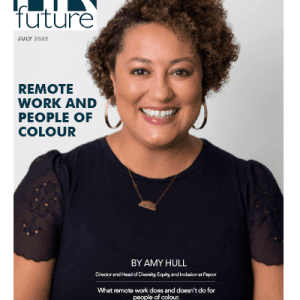For both leaders and employees, the workplace (physical and virtual) is rife with emotional complexities, making it essential for all stakeholders to learn key communication and interpersonal skills. Arguably, one of the most important skills in any relationship is the ability to create and maintain healthy boundaries. Without boundaries, misunderstandings and resentments can go unchecked. That said, this is a new and murky area for many of us to explore.
To begin with, we need to define boundaries and why they are so important. One simple definition is that boundaries in relationship terms are about naming and making clear to others what’s okay and what’s not okay…and why. Failure to set boundaries can quickly lead to resentment, frustration and sometimes deep hurt.
With this in mind, why are we reluctant to set boundaries – and why does it feel so hard? Setting boundaries is vulnerable and brave work. For most of us, asking for what you want and don’t want can feel risky – plus holding others to account for their behaviours is equally gutsy (and daunting)!
Notably, when people are asked why they hesitate to set boundaries, the number one answer that emerged from research conducted by the Brené Brown Education & Research Group was: “I don’t want to make people angry, disappoint others, or make them stop liking me.”
The number two reason, related to the first, was the following: “I don’t know how to set boundaries without sounding selfish or unlikeable.”
Yet when people are asked to describe or explain the consequence of not setting boundaries, the overwhelming response is resentment, followed by anger, followed by frustration…and the responses sometimes go so far as to include deep emotional and psychological pain. These emotions eat away at our individual and collective confidence, and trust. They lead to people talking behind each other’s backs, to blame and to people not feeling seen and heard. Now, these are all behaviours known to erode healthy cultures and to break down productive working relationships – and even businesses.
Understanding the leader’s role
If a leader is anyone who takes responsibility for developing the potential in people and processes – and is courageous enough to do so – then all of us are leaders. So, as leaders we need to:
- Model appropriate behaviours. We often feel like we need to apologise or justify when setting a boundary. We don’t. And, likewise, as a leader, it’s not your team’s job to make you feel better or more comfortable setting a boundary. Just be clear, respectful, and open for questions. Most of the time, people will be thankful for the clarity and appreciate the rarity of seeing someone else ask for what they need (rather than be passive aggressive or annoyed).
- Respect the boundaries set by others. If we want people to respect our boundaries, we must respect theirs as well. Hearing and saying “No” is often hard. But if, you respect people who are brave enough to say No, they will in turn respect your No. When we accept that others have the right to set boundaries with us, we feel better about (or more able to) set our own.
- Boundaries are a core component of honesty and trust building, and this starts with oneself. How committed and able are you to identify, voice and hold your own boundaries? What’s the intention sitting behind your boundary? How sure are you it’s not a barrier or an excuse? Be honest with yourself: how do you typically respond to others’ requests? Do you have a tendency to say Yes or No too often? How often do you renegotiate?
- Watch out for secret, invisible boundaries. Because of the fears described above, people may set “secret” boundaries. We withdraw, get resentful, or experience annoyance with someone’s irresponsibility instead of being honest about how they affect us. Boundaries need to be made visible to others and communicated clearly and kindly. If they’re not communicated directly, they will be communicated indirectly (passive-aggressiveness) or through manipulation.
Sidebar: Examples of boundaries
In relationships, both personal and professional, we need to understand that there are several areas where boundaries might need to be articulated, requested and respected.
5 key boundary domains/areas:
- Emotional: these are boundaries around inappropriate topics, emotional dumping, and dismissing emotions
E.g. “This isn’t a topic I’m ok with or willing to discuss further.” - Material: Boundaries around possessions, when they can be used, and how they are treated.
E.g. “My car cannot be used on weekends; material from this workshop can’t be copied and reproduced.” - Time/energy: Boundaries around time, punctuality, when to contact, favours and free labour.
E.g. “If you’re going to be late, please message me in advance of the meeting start time to let me know; let’s agree to take short breaks every 45-60 mins.” - Mental/spiritual: Freedom to have your own thoughts, beliefs, values and opinions.
E.g. “I respect that you may disagree with my opinion, and please don’t force your own.” - Physical: Proximity, touch, PDA (personal displays of affection), unwanted comments regarding appearance, gender, orientation or sexuality.
E.g. “I don’t find comments like that funny or appropriate. ”
Julia Kerr-Henkel is the founder of Lumminos.














